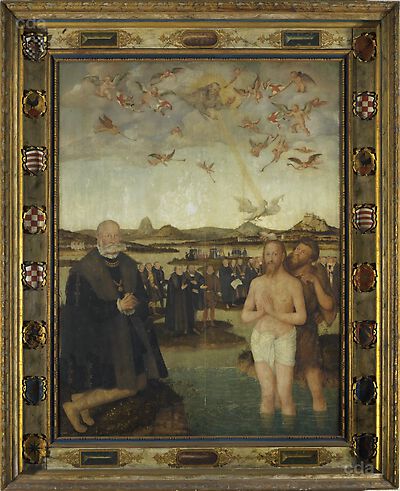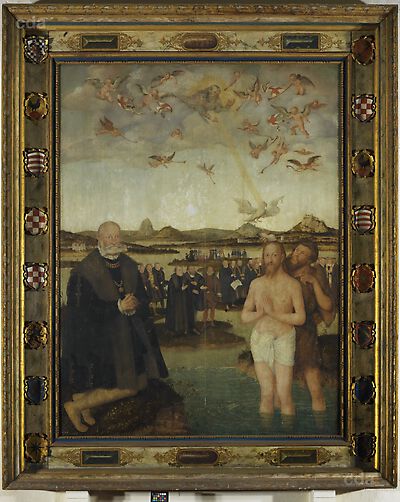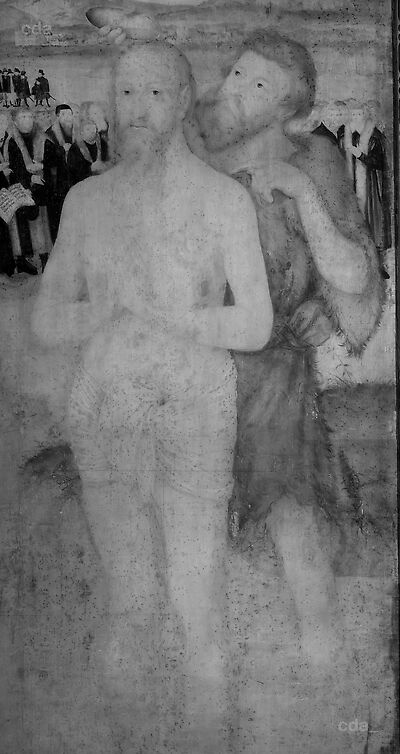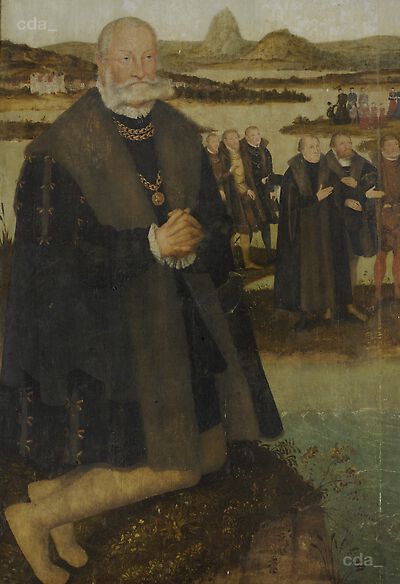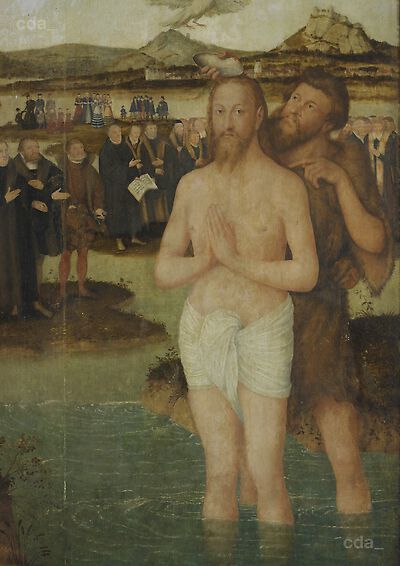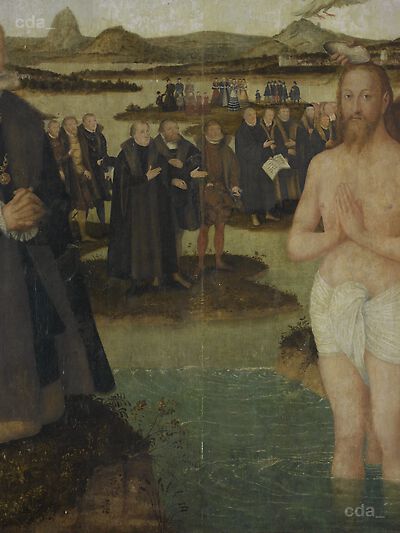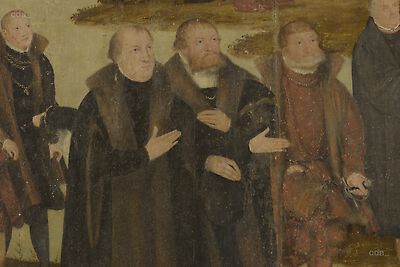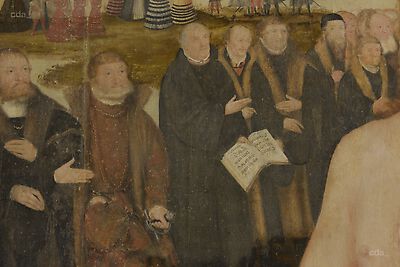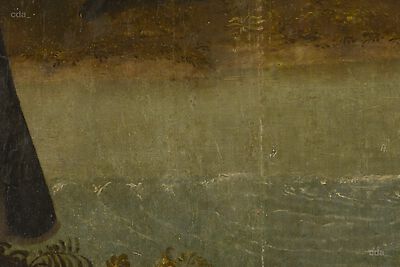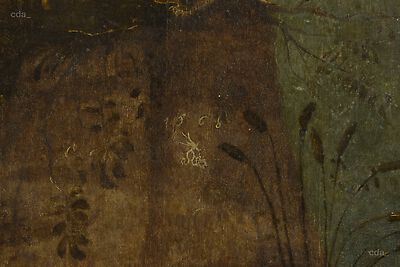- Attribution
- Lucas Cranach the Younger
Attribution
| Lucas Cranach the Younger | [Schade 1974, 96] |
- Production date
- 1568
Production date
| 1568 | [dated] |
- Dimensions
- Dimensions of visible surface 274 x 203.5 cm
Dimensions
Dimensions of visible surface 274 x 203.5 cm
Dimensions including frame: 347 x 276.5 x 23 cm
[Heydenreich, cda 2015]
- Signature / Dating
Artist's insignia and date at the bottom left: serpent with dropped wings, facing right, and dated '1568'; in yellow paint
Signature / Dating
Artist's insignia and date at the bottom left: serpent with dropped wings, facing right, and dated '1568'; in yellow paint
[cda 2015]
- Inscriptions and Labels
In the middle-ground Luther holds an open book with the following text:
-
The title extends over both pages:
'Matth. III …Inscriptions and Labels
Inscriptions, Badges:
In the middle-ground Luther holds an open book with the following text:
- The title extends over both pages:
'Matth. III Xvi[?]'
- left page:
'Diess ist
mein liber
Son, an wel=
chem ich ein'
- right page:
'wolgefalle
habe, den
sollet ihr
hören.'
[Görres, cda 2015]
- inscription (after [Wieman 1907, 69f.]):
Piis manib.
Illustriss. Pr. ac Dn. D. Guolphgangi Dei Gr. Pr. Anhalt. Com.
Ascaniae Dn. Servestae et Bernburgi etc., qui Servestae pie de-
functus est anno Christi MDLXVI Martii D. XXIII. H. noct. XI.
Min. XLV. cumque magno familiae patriaeque luctu sepultus,
mensis eiusdem D. XXVII. H. X., aetatis anno LXXIIII currente,
In hoc choro, quem una cum templi parte contigua quae est inter
portas austral. et bor. ope sua fecit instaurari placidam.
Princeps Anhaltinae domus
Guolphgangus Ascaniae comes
Servesta quem dominum suum
Et Berneburga norat: O Patriae pater
Cui cura prima erat Deus, Temp. M.
Tutela legum proxima, D.
Salus quiritum tertia, H.
Postrema habiri asilum pauperum fuit. M.
Ardens amore coelitum, Aet. Pr.
Regnique particeps sui, An. Chris
Gnate o Dei vitae satur, ti
Fide supremam clausit hic firma diem Mundi
Senum sub hoste Martio,
Vicena lux et tertia,
Nonamque post hora altera
Punctumque fluxerat quadrantis ultimi.
Guolphgange vixisti pie,
O pax Anhaltinae domus.
Sepulte dormias senex,
Tristata sunt ob cuncta principem suum.
Patruo magno et parentis loco habito,
Nepp. et heredes Joachimus Ernestus et
Bernhardus FFr. Et PPr. Anhalt. moesti H. M. F. FF.
- Owner
- Evangelische Kirchengemeinde St. Bartholomäi, Zerbst
- Repository
- Evangelische Kirchengemeinde St. Bartholomäi, Zerbst
- Location
- Zerbst
- CDA ID
- DE_KBZ_NONE-KBZ001
- FR (1978) Nr.
- FR-none
- Persistent Link
- https://lucascranach.org/en/DE_KBZ_NONE-KBZ001/
-
